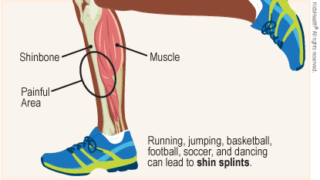CONDITIONS
Medical Conditions we treat:
HEAD
NECK
SHOULDER
WRIST
HIP
KNEE
ANKLE
BACK
ELBOW

Medical Conditions we treat:
- Musculoskeletal Conditions
Joints & Bones
Frozen Shoulder (Adhesive Capsulitis)
Bursitis
Dislocated Shoulder
Post Surgical Rehabilitation
Knee Pain
Osteoarthritis
Condramalacia Patella
Joint Stiffness
Neck & Spine
Neck Pain & Stiffness
Spondylitis
Low Back Pain
Sciatica
Degenerative Disc Disease(DDD)
Herniated Discs(Bulging Discs)/Slipped Disc
Spondylosis
Scoliosis
Piriformis Syndrome
Posture problems
Muscles
Spasm
Fibromyalgia
Rotator Cuff Injuries
De Quervain’s tenosynovitis
Trigger Finger
- Neurological conditions
- Sports injury conditions
Shin Splints
Shin splints refer to pain and tenderness along or just behind the large bone in the lower leg (the tibia).This pain concentrates in the lower leg between the knee and ankle.
Shin splints frequently affect people who engage in moderate to heavy physical activity. You may be more likely to develop shin splints if you participate in strenuous physical activities or stop-start sports such as tennis, racquetball, soccer, or basketball.
Sometimes the pain of shin splints can be so intense that you must stop the activity.
Shin splints is a cumulative stress disorder. Repeated pounding and stress on the bones, muscles, and joints of the lower legs prevents your body from being able to naturally repair and restore itself.

Causes
Shin splints most often happen after hard exercise, sports, or repetitive activity. This repetitive action can lead to inflammation of the muscles, tendons, and thin layer of tissue covering the shin bones, causing pain.
Shin splints can also result from stress reactions to bone fractures. The constant pounding can cause minute cracks in the bones of the leg. The body can repair the cracks if given time to rest.
Symptoms
These are the most common symptoms of shin splints:
- Pain felt on the front and outside of the shin. It’s first felt when the heel touches the ground during running. In time, pain becomes constant and the shin is painful to the touch.
- Pain that starts on the inside of the lower leg above the ankle. Pain gets worse when standing on the toes or rolling the ankle inward. As the shin splint progresses, the pain will increase.
- a dull ache in the front part of the lower leg
- pain that develops during exercise
- pain on either side of the shin bone
- muscle pain
- pain along the inner part of the lower leg
- tenderness or soreness along the inner part of the lower leg
- swelling in the lower leg (usually mild, if present)
- numbness and weakness in the feet
Risk factors
- an anatomical abnormality (such as flat foot syndrome)
- muscle weakness in the thighs or buttocks
- lack of flexibility
- improper training techniques
- running downhill
- running on a slanted surface or uneven terrain
- running on hard surfaces like concrete
- using inappropriate or worn-out shoes for running or working out
- participating in sports that have fast stops and starts (like soccer or downhill skiing)
Shin splints are also more likely to occur when your leg muscles and tendons are tired. Women, people with flat feet or rigid arches, athletes, military recruits, and dancers all have an increased likelihood of developing shin splints.
Diagnosis
Your healthcare provider can most often diagnose shin splints by reviewing your medical history and doing a physical exam. X-rays are often needed.

